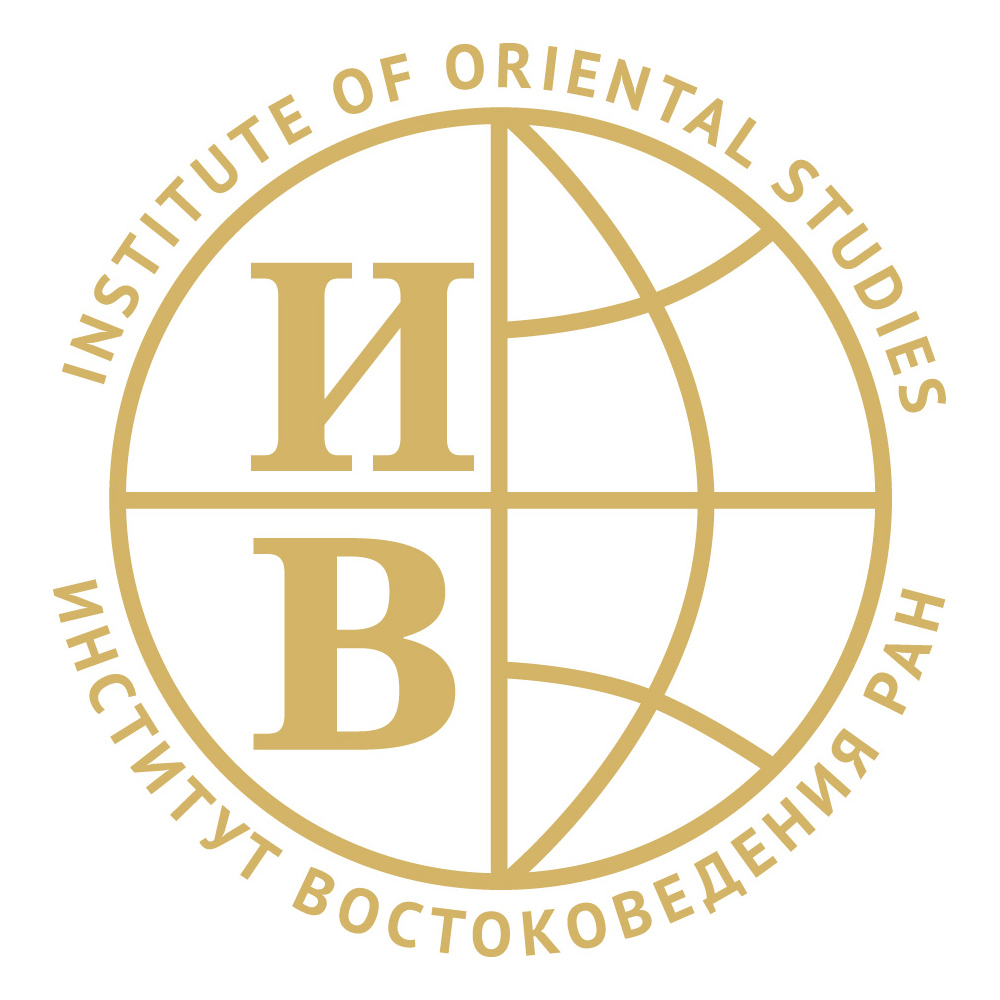My Jerusalem
 An essay published by our member Walid Salem in 2014, which gets particular sharpness in the context of current events regarding situation in Jerusalem.
An essay published by our member Walid Salem in 2014, which gets particular sharpness in the context of current events regarding situation in Jerusalem.
Jerusalem that looks to be more as if it is the ownership of the Israelis and the internationals, either living in it, or talking about it from outside. What it is represent for me as a Palestinian Jerusalemite?. Why I am also excluded not only when it comes to my rights to the city, and my rights in the city, but also excluded from my right of representing it. In the ground as many Palestinian Jerusalemites, I have a demolition order to my house since 2002, and as many others a new road that links between two settlements in East Jerusalem started to be created passing exactly at the entrance of my house in Shuafat.
This is just a minor example of the deprivation of the Palestinian Jerusalemites rights in the city.
But also I have no right to the city, I am not allowed to make a political claim that East Jerusalem is mine, something that the international community organizations in the city is adapting with, by avoiding to take actions that make Israel angry of them in the city. Thirdly I have no right to represent my self politically. In the legal level I am obliged to be defined as" A Jordanian Citizen residing Permanently in Israel", as the Israeli authorities define my status, then I am an alien in my city, cannot claim it, and as a" Jordanian" living in Israel as the say, I have to respect the generosity of the Israel of allowing me to live in an "Israeli" territory that was annexed to Israel in 1967.
Therefore also I have no right to represent my self administratively, and also in the community level. In this level my Arab Municipality was dissolved by the Israeli Authorities in 1967, then I was obliged to deal with an Israeli municipality that do not represent me. Such a municipality imposed on me its community centers that it established inside my communities, and made it the address for providing services to me. These are just examples, and there are many others, while my presence in my city faces several complex challenges, that are: first: Jewdization of the land, the place, the space, and the landscape. Second: Israelization of the Institutions by obliging me to deal only with Israeli organizations for the services, while closing the Palestinian organizations and delegitimize any link between those existing and the Palestinian authority. Third: Ethnic cleansing by using different methods of evacuating me to out of my city. Fourth: Isolation of those who will stay in the city after all of this by disconnecting the Palestinian neighborhoods in the city from each other, therefore I will need to pass through a Jewish"neighborhood", when I need to move from one Palestinian neighborhood to another. In addition to that the isolation of houses in each Palestinian neighborhood by creating Jewish enclaves inside these neighborhoods such as in the Old City and Silwan. Fifth and last: The closure started in 1993 by checkpoints and permits system, and ended with the creation of a separation wall, aiming to disconnect between the Palestinian Jerusalemites themselves and not only between the Jerusalemites and West Bank Palestinians. Needless to say that the Jerusalemites are also not allowed to travel to Gaza. These policies were not possible to pass without resistance from the Jerusalemites. In this regard Jerusalem continued to be the Center of the Palestinian national leadership from 1967 till 1994. Then the period 1994 to 2001 witnessed a division of leadership between Jerusalem and Ramallah. After the death of Faisal Husseini in 2001,the leadership moved fully to Ramallah. Nowadays one can see in the city new grassroots leadership that replaced the old leadership of notables that came to its end after the death of the last notable leader Faisal Al Husseini in the year 2001. None of the existing personalities was able to fill the vacuum created after Faisal Husseini death, also Ramallah leadership did not want that to happen, and more importantly the Israeli iron hand against any Palestinian leadership in the city prevented a new central leadership to emerge after Faisal passed away,but since life cannot live with a vacuum, the absence of Faisal was replaced by a new type of collective leadership if you like to call it represented by local community leaders who acquired legitimacy in their communities through their accumulative actions for the benefit of their communities. During Faisal Al Husseini period there were a central institution of leadership that gathered around a charismatic leader. After Faisal Al Husseini we started to see the dispersement of the leadership to the communities, in one hand this means that we came to a situation of more participation, but in other hand the leadership was localized, and the Central Jerusalem leadership was lost. The Jerusalemite other personalities failed to replace Faisal Husseini after his death, therefore they lost legitimacy, or at least they have less and less legitimacy than the communities new emerging leaders, but they still in the other hand have a wealth of knowledge and experience that it is very important that they present it to the communities leaders. These old version leaders are still also those of loud voice with the international community and with the donors while their local basis of legitimacy is diminishing. The conclusion about them is then that they are not any more the personalities that can develop a new leadership to Jerusalem( this task already went to the community leaders), but certainly these still can play the role of the advisors by their knowledge and experience to the community leaders.
The community new leaders are (the Building track) for any new central Palestinian leadership in Jerusalem, while the personalities and the NGO,s are the Supporting Track , and we should not confuse between them, their roles, and the level of importance of each one of them.
While the first track of the community leaders is ready to launch, the second of personalities is in disarray, is fully fragmented, full of competitions,parallel work and other diseases beyond their high knowledge and expertize. The international donors policies help to develop and sustain these aspects of behavior, something to be clarified in another article
Another important part of the issue of legitimacy and leadership in the city of Jerusalem, has to do with other two components: the first represented by the children of Jerusalem of 7 to 12 years old, who found themselves with the continuous ongoing humiliation and with insecurity, mainly after the kidnapping and the cruel killing of their mate Mohammed Abu Khdeir and other events that followed. These children are the main actors in the nights clashes that goes on every day in the East Jerusalem communities since the brutal killing of Mohammed Abu Khdeir.
The other component to be taken in consideration there is the Islamic component, as it express itself by the intensive involvement of the Northern part of the Islamic movement inside Israel in defending Al Aqsa against the Israeli right wing extreme groups against it , something that will lead to a religious war, starting with reaction of anger like those three of killing Israelis by running over them in the last month. These events and others alike might grow if the attacks on Al Aqsa mosque continue.
The explanation above , can provide you with the basic analysis that can help you ( and also help us), to understand the situation in Jerusalem these days. Since 2000 Intifada the situation in the city started to become bigger than the capabilities of the individual charismatic leaders to control. New local leaders start to emerge, now with the accumulation of oppression some of them started already to move to violence. Therefore it is essential to find themYESTERDAY non violent methods and representative
bodies to express themselves, and therefore containing the move to violent methods of expressing themselves. We should started this yesterday, but the lack of enough well in our side, and the hesitations in the international community resulted from the political hesitation , or from the inability to understand.
Trump's declaration and the Palestinian response
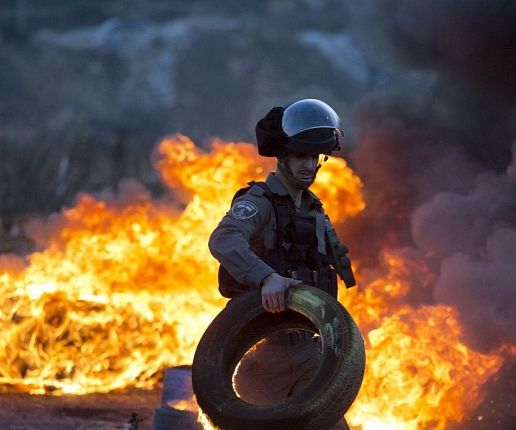 December 9, 2017 was the 30th year anniversary of the first Intifada. So far, the Palestinian responses of yesterday took three tracks: Diplomatic, nonviolent, and violent. Here is a description of each, and I will close with some conclusions.
December 9, 2017 was the 30th year anniversary of the first Intifada. So far, the Palestinian responses of yesterday took three tracks: Diplomatic, nonviolent, and violent. Here is a description of each, and I will close with some conclusions.
The diplomatic track included two crucial steps that were taken immediately: One is cutting the relations with the US administration, and the declaration by Azzam Al Ahmad, member of the central committee of Fateh, that President Abbas will not meet Mike Pence on December 19 in Bethlehem as was scheduled. The second was about submitting a complaint to the UN Security Council by the PLO Mission to the UN against the USA. It is said that point 3 of the article number 27 of the UN Security Council does not allow the USA to use the veto right against a complaint submitted against it. It is also said that nevertheless if the veto will be used, then the next step will be about going to the UN General Assembly to make a resolution under the “United for Peace” clause, which will be an obligatory resolution.
The nonviolent track expressed itself through the hundreds of demonstrations that took place yesterday in East Jerusalem, West Bank and Gaza Strip.
At the same time rockets were launched to Israel from Gaza, this time by Al Qaida and ISIS-affiliated groups. Hamas called for an Intifada without defining clearly its tools, while the Islamic Jihad and the PFLP called for struggle against the Israeli occupation by all means.
These three tracks have the following significance:
The new diplomatic track of cutting contacts with the Americans, if it continues, will mean the end of counting on negotiations as the path to the Palestinian statehood, and going instead to the path of popular resistance (as it was called by Jibril Rajoub in his recent interview with Al Arabiyya), and motivating the Arab world and the international community to take steps against the Israeli occupation and to pressure the United States by using all the diplomatic and the legal means in that direction.
The nonviolent track will be, like it or not, confused with the violent ones. The reasons for this confusion is manifold. In this regard, they are not only about the inability of the Palestinian young people to be fully rational when they are in a mood of rage and anger, but there is something deeper that has to do with the full collapse of trust in the political process of negotiations and its bitter harvest over the last 26 years since the Madrid Conference. Accordingly, it is time for the political leadership to plan and lead a full and continuous nonviolent campaign.
In order for the leadership to be able to convince its people to do so, it will need international support by giving it some concrete results to present to its people, such as more recognitions for the Palestinian State, building Palestinian facts on the ground in area C and East Jerusalem, rebuilding Gaza, creating free access between Gaza and West Bank, and finally taking care of the dignity of the Palestinian refugees until their right of return issue is solved. The non-achievement of these steps will create the conditions that are conducive to growth of violent extremist groups in both West Bank and Gaza, and the Palestinian refugee camps in the Arab neighbouring countries as well.
Article published in Valdai club: http://valdaiclub.com/a/highlights/trump-declaration-and-the-palestinian-response/
How Trump’s decision on Jerusalem can give momentum to Palestinian statehood
 President Trump’s recent decision to recognize Jerusalem as the capital of Israel, and to move the American Embassy from Tel Aviv to Jerusalem represents a crucial change in the American policy. This change can be described as a shift from the previous biased mediator position to the new position of the partner of Israel in its plans towards the Palestinians.
President Trump’s recent decision to recognize Jerusalem as the capital of Israel, and to move the American Embassy from Tel Aviv to Jerusalem represents a crucial change in the American policy. This change can be described as a shift from the previous biased mediator position to the new position of the partner of Israel in its plans towards the Palestinians.
This shift is not only a violation of the international law and the UN resolutions regarding Jerusalem, but also a violation of the 1993 Declaration of principles, signed in the White House and known as the Oslo Accords. According to that Agreement (Article 5), Jerusalem as a whole, including its East and West parts, will be subject to negotiations between the two sides. The agreement also warned against any procedures to be taken unilatarely in a way that would prejudice against the permanent status issues including Jerusalem. President Trump unilaterally decided to go beyond this Oslo commitment and to recognize Jerusalem as the capital of Israel before an agreement about its borders and its division between the two sides. This is a crucial violation.
Process-wise, this move to unilateralism goes against the multilateral/international concerted efforts to solve the Israeli-Palestinian conflict. As such, it will give the Israeli government additional motives to increase its unilateral steps to change the landscape of Jerusalem in a way that will leave no place and no space for the East Jerusalem Palestinians in the city. They will face more and more ethnic cleansing and forced migration. Different means will be used in this regard such as evacuation of the Bedouin neighborhoods around Jerusalem, ousting Palestinian communities from the city (such as Kufur Aqab, and Shufat Refugee camps), and identity cards confiscation.
The response to this American move might take one of two shapes: the first is to give President Trump a chance to develop the “ultimate deal” and present it to the parties in the coming months. Those who adopt such a position say that President Trump referred in his speech to the two-states solution, the preparation for the deal, and that the borders of Israeli sovereignty over Jerusalem will be decided by negotiations. That is in addition to his call for preservation of the status of the Holy places in Jerusalem.
The second argues that the hopes on the Americans to present a solution is over after 26 years of trial and error in the negotiations since Madrid 1991 conference till today. As such, this response calls for adoption of another path: to get to the Palestinian State in the 1967 borders and with East Jerusalem as its capital. It includes creating a Palestinian nonviolent campaign for independence, establishing Palestinian facts on the ground, especially in area C, Gaza and East Jerusalem, linking Gaza and West Bank together, promoting the Palestinian people’s unity, stuggling for more international recognition of the State of Palestine, and suing occupation in international courts.
The second looks to be a path for the creation of a new momentum towards Palestinian statehood. It advocates that the Palestinians should start this path, and then to ask the international community to support it as a path to their national emancipation.
As such, the second position argues the hit can be transformed into an opportunity for the Palestinians to get their right of self-determination in their independent state.
Article published in Valdai Club: http://valdaiclub.com/a/highlights/trump-s-decision-on-jerusalem/
Photo credit: Mohammed Zaatari/AP
Shehab Al Makahleh: Trump's decision will have a very negative effect on the peace process

In today’s speech president Trump announced his decision to move the American embassy from Tel Aviv to Jerusalem without giving details about to which part of Jerusalem, but it is expected to be moved to East Jerusalem. His declaration that Jerusalem is the capital of Israel will have a very negative effect on the peace process, and may even freeze it for the time being, opening the gates for extremists and radicals who will start working underground and even openly. They will be having hubs and will be harbored by many people. In the past they were working secretly and now they will be overtly operating against American and Israeli interests throughout the world. This deal between the Americans and Israel could not happen without an Arab approval of what is called the “Big Deal”, which means that the Palestinians would be having their own capital in Abu Dis, which is located near Jerusalem city. This could not have happened without this kind of deal, without some Arabs. The Palestinians will not be having their own independent state, which they were dreaming of in 1995 when they signed Oslo agreement. Back then the White House already believed that Jerusalem is the capital of Israel, even though the other presidents of the US did not have the courage to announce it since then. But Donald Trump announced it without even thinking of any consequences and repercussions that would happen. That is why before he announced it, he asked the military, American Marines, to be ready for any outcome that would take place in the Middle East or anywhere in the world.
Photo credit: Renewer/Fotolia
Alexander Aksenenok: there's absolutely no logic in Trump's decision on Jerusalem
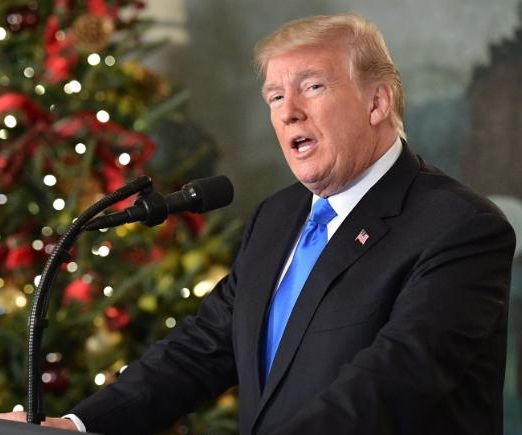 Trump occupies his post for already a year and during this time his Middle-Eastern politics has become an object of heated criticism from active and retired diplomats, Middle-Eastern experts and political scientists. There is even an opinion that Trump, unfortunately, listens more to his relatives, so it is unclear where the White House ends and where Trump’s family begins. He listens more to the opinions of unqualified people on the Middle East, than to the experienced diplomats. Moreover, the situation in the Department of State remains rather volatile. Despite one year has already passed, many offices remain unoccupied and Tillerson prefers a rather authoritarian mode of management, without listening to the Middle-Eastern specialists. At the same time there are several points of disagreement between Tillerson and Trump on the Middle East, which have become public.
Trump occupies his post for already a year and during this time his Middle-Eastern politics has become an object of heated criticism from active and retired diplomats, Middle-Eastern experts and political scientists. There is even an opinion that Trump, unfortunately, listens more to his relatives, so it is unclear where the White House ends and where Trump’s family begins. He listens more to the opinions of unqualified people on the Middle East, than to the experienced diplomats. Moreover, the situation in the Department of State remains rather volatile. Despite one year has already passed, many offices remain unoccupied and Tillerson prefers a rather authoritarian mode of management, without listening to the Middle-Eastern specialists. At the same time there are several points of disagreement between Tillerson and Trump on the Middle East, which have become public.
Speaking about this very decision, now I can say that there is absolutely no logic in it. Even from the point of view of the US national interests in the region. There is an opinion that many of Trump’s advisers have planted in his mind an idea that now the situation in the Arab world has changed so much that the Arab states do not pay attention to the Palestinian issue and that his decision to move the embassy to Jerusalem or to recognize this city as Israel’s capital will not provoke backlash in the Arab world. He thinks that maybe Arabs will have some minor protests, but not like in the 50ies and 60ies. Probably, such thoughts made Trump pass such decision. But there is absolutely not logic in it, and the reaction of Arab states, even of Saudi Arabia that now established special relations with Israel, of Iraq, Egypt, of European states like France, is naturally negative and will complicate the resolution of many other regional issues. This will hamper Trumps policy not only in the Palestinian-Israeli dimension, but also in Europe and in the Islamic world as a whole.
Photo credit Mandel Ngan/AFP
Al Aqsa Intifada, features, regional and international impacts, and horizons
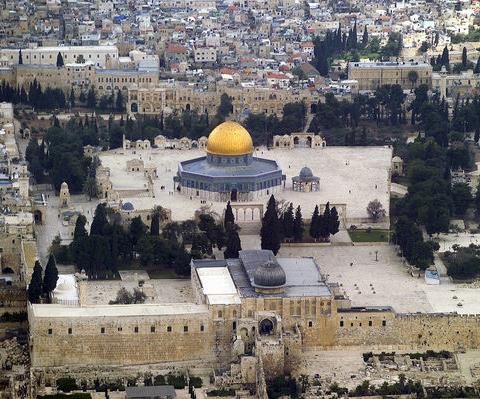 It was an uprising with all its meaning. This is what happened in the events of the 14th to the 28th of last July, where the "Al-Aqsa Intifada" took place.
It was an uprising with all its meaning. This is what happened in the events of the 14th to the 28th of last July, where the "Al-Aqsa Intifada" took place.
All the five features of the first Intifada existed:
First:Participation between all generations and ages, between the sexes, between all classes, social groups, professions and local communities, between Muslims and Christians among our people, between Palestinians of Jerusalem and Palestinians inside the Green Line, between religious and secular. Between the field leadership and the street,
All participated together to protect our national existence, and its meaning embodied in the image and structure of the Al-Aqsa Mosque.
Secondly, and third:National unity, solidarity and cohesion: unite all behind national United slogans: the slogans of factions were not raised, and the compitition between everyone to provide food and drinks and other needs of the protesters without waiting for any support or funding. Every one was following the decisions of the four Shiekhs, the sound was one and the act was the same.
Fourth, the characteristic of continuity and communication as a reflection of national resilience , self-esteem, and a high sense of dignity, was expressed by the absence of refraction in the face of the repression of the occupation and its daily attacks on the protesters. And what amazed the Israeli police that the number of protesters was increasing day after day despite all the use of the methods of repression and abuse. After each "meal" of oppression , the number of protestors increased. After the next "meal" of oppression, it increased more and more. Perhaps this was the main factor that made the occupation forces retreat in the face of the high psychological resilience and the unrelenting willingness to give to our people.
Fifthly, the characteristic of the peaceful and non violent nature of the Intifada, and the measures of the occupation have not changed its course. The preservation of this character has enabled the continued participation of all groups, despite their varying capabilities, and has enabled the world to stand by and support the creative approach adopted by the Intifada participants.
Therefore, we have experienced an Intifada, not measured by the number of days, but measured by its qualities, and what it achieved:
In the context of what has been achieved, many are trying to limit what has been achieved, which is only to prevent the occupation government from imposing electronic gates and surveillance cameras. This flawed view has not been able to take into account the following Palestinian, Arab, Islamic and international results:
Let us start with a Palestinian: a living model has emerged here, and an additional glimmer of examples of what popular resistance can achieve, a model whose lessons and mechanisms will be absorbed and replicated elsewhere. Unfortunately, this model has not yet affected both sides of the divide, leading them to unity.
On the other hand, the Arabs were forced to hold an extraordinary meeting of the ministers of Forwign Affairs on the subject, and Jordan stood on its feet to follow up the event as well as other Arab countries. It is important also to say that those who were thinking of normalizing their relations with Israel would think now and after the Al-Aqsa Intifada a thousand times before they take such steps.
On the popular Arab and Islamic level, we have seen the demonstrations of anger that have taken place in Amman, Istanbul and many other Arab and Islamic capitals and cities.
Europe: At the beginning, European countries called on "the parties to exercise restraint and not to be dragged into violence," according to their statements, but later, as the nature of the matter became a further step to impose full Israeli control of Jerusalem, there was a change in the European position, which called on the preservation of " The Religious and Historical Status of Al-Aqsa Mosque: The Status Quo ".
The problem was in the US position, which completely adopted Netanyahu's speech on the need for electronic doors and cameras to ensure its security, so America chose to work to ensure the security of the occupation, as an alternative to work to end it.
In this context, there is a need to speak with the Americans in order to understand that the Al-Aqsa Intifada must make them think a thousand times before taking the foolish step of moving the US embassy from Tel Aviv to Jerusalem.
The Al-Aqsa Intifada has achieved all these results. What remains important is the continuation of the popular struggle for the accumulation of other achievements, such as the end of the provocative settlers' incursions into the Aqsa Mosque, the cessation of settlement expansion and others as steps on the way to end the longest settler colonial occupation of the last century.
A joint Jordanian-Palestinian crisis committee to avoid a third intifada
 A meeting on August 7 between King Abdullah of Jordan and Palestinian President Mahmoud Abbas established a joint crisis committee to follow up the Israeli violations at Al-Aqsa Mosque and evaluate the past and expected Israeli violations in Jerusalem.
A meeting on August 7 between King Abdullah of Jordan and Palestinian President Mahmoud Abbas established a joint crisis committee to follow up the Israeli violations at Al-Aqsa Mosque and evaluate the past and expected Israeli violations in Jerusalem.
The two-state solution the only way out for Arab-Israeli conflict
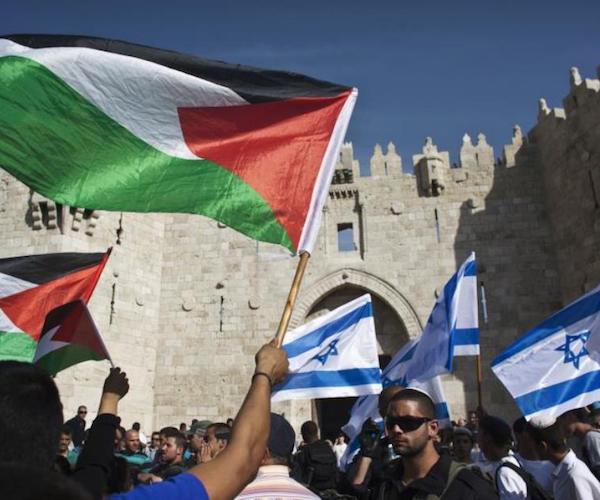 Arab countries led by Jordan and Saudi Arabia have been pushing the Americans and the European Union to prepare for a framework agreement between the Palestine National Authority (PNA) and Israel based on a two-state solution, which ensures a Palestinian state in the areas occupied by Israel in 1967.
Arab countries led by Jordan and Saudi Arabia have been pushing the Americans and the European Union to prepare for a framework agreement between the Palestine National Authority (PNA) and Israel based on a two-state solution, which ensures a Palestinian state in the areas occupied by Israel in 1967.
Though the laws of gravity are not in favor of Arab countries; yet, the endeavors of both Jordan and Saudi Arabia to solve the Arab Israeli conflict seem a preventive measure to avert any negative and destructive consequences that would arise if the stalemate between Palestinians and Israelis continue further with blurry hazy image.
Following the visits of King Abdullah II of Jordan and Deputy Crown Prince Mohammad bin Salman of Saudi Arabia to Washington, Americans have planned to initiate a peace conference between Arab states and Israel to discuss the issue of stalemating talks between the Palestinians and the Israelis which have led to deadlock to their talks.
Arabs believe that a two-state solution is the cornerstone to end the conflict in the Middle East, and that Americans should play a key role to help both the Palestinians and the Israelis reach an agreement that paves the way to establish a Palestinian state in pursuance with United Nations Security Council Resolutions 242 and 338.
Any proposal to create one state where both nations live happily is refused by Arab countries and their leaderships and for sure by Palestinians as this means the Palestinians abroad will not be able to return to their country. This would be another impediment for future cooperation between Israel and Arab countries at trade and economic levels. All Middle Eastern countries are vulnerable to social unrest and extremism if the main reason for the conflict is not addressed and unresolved as further regional hostility to Israel would intensify and lead to a new type of skirmishes with new war players.
The Arab Summit in Jordan will highlight this issue and the committees concerned will be discussing it thoroughly in order to ink an accord between the PNA and Israel on the two-state paradigm with American and Russian direct mediation and honest brokerage. No super power is allowed to distance itself from this mission as the internal situation in Middle Eastern countries is exacerbating due to economic and social pressures which would lead to implosion in a number of states that would destabilize the whole region and lead to eccentric comprehensive war with new fighting techniques leading to street wars that no army would be able to stand.
The meetings of American President Donald Trump with Israeli Premier Benjamin Netanyahu and Palestinian President Mahmoud Abbas aim to probe into means to launch a new pace conference to discuss further details, taking the concerns of both Netanyahu and Abbas into consideration.
However, the nonchalant comments and statements by American officials regarding the one-state or two-state solution complicated matters as both Palestinian and Israeli leaders cannot totally control their people and the situation if it aggravates. The one –state solution is rejected by a majority of Israelis as per a survey conducted in Israeli last February which showed that 55 per cent of Israelis and 44 per cent of Palestinians support the two-state solution for two people. The years of acrimony and hostility between both nations should come to an end and a new age of Arab-Israeli relationship should start as a new dawn has just started with a new American president who seeks to find Arabs and Israelis in one boat against Iran. Trump is currently working along with his administration on establishing a new paradigm for peacemaking, without abrasively encroaching upon Netanyahu’s views towards Arab Israeli conflict. In other words, any solution should be attuned with Israeli right wing opposition principles.
At present, we are at the threshold of either of a two-state solution or radicalism and wild-eyededness. Thus, the two-state paradigm should not be a fairy tale at Trumpland or a dream in the Palestinian Wonderland. Arab leaders are not more than ever aware that any further escalation in the Palestinian lands would lead to a third Intifada or uprising which will spill over oil on fire to turn the region into an erupt volcano as all Middle Eastern states with no exception are on “hot tin roof”.
The Arab Summit should reiterate that there is no solution to the regional conflicts without a Palestinian polity with its people to have the sole right of self-determination. This can be brokered by the two super powers: Russia and the USA. The sooner to resolve the conflict, the better it will be to foil all radical attempts to recruit more jihadis.
In 2002, Arabs offered their Peace Initiative in Beirut Summit based on full Israeli withdrawal to the borderline before 1967 and a Palestinian capital in East Jerusalem. Now, at Amman Summit they can recap this initiative with American support to create the proposed affinity of Sunni Arab countries and Israel to counter the increasing Iranian threats to Arab states. This alliance would also help stand against extremism and terrorist risks.
As far as the two-state solution might be unseen at least in the near future due to internal troubles in Israel, the PNA and the USA, the status quo will be last until further notice until an honest mediator or broker takes the initiative to end this dispute which lasted for over 69 years. An honest mediator will be in charge of understanding the nature of the Arab-Israeli conflict in terms of sovereignty and religion including the holy shrines in East Jerusalem. If there is no cooperation from the UN and from other neighboring states, the issue will amalgamate. If the issue of the holy shrines is left unrequited, radicalism and jihadi threats will be in the offing.
Jerusalem: Reconsidering the settler colonial analysis
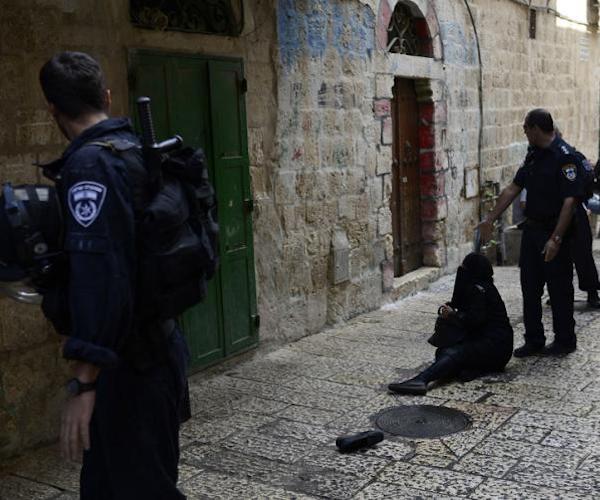 Introduction: The re-emergence of the settler colonial approach in the academic world
Introduction: The re-emergence of the settler colonial approach in the academic world
The 1940's to the 1970's was a period of decolonization and self-determination for many countries in Asia and Africa. An immense amount of academic and intellectual writings about colonialism, neo-colonialism as well as settler colonialism accompanied that process of decolonization. At the same time, the UN released several resolutions and documents condemning colonialism and seeking the immediate fulfillment of the right to self-determination for all peoples living under colonial rule. The most famous among these resolutions is the 1960 UN General Assembly resolution about decolonization.
The writings on colonialism at that time focused on military colonialism and the right of all peoples to self-determination and emancipation from colonial occupation, while neocolonialism focused on how colonialism "left through the door and came back through the window", using economic and cultural means rather than direct military control as it was the case with colonialism before.
The writings about settler colonialism focused on a type of colonialism which combines military occupation with a settler colonial component that included taking over land, space, territory and landscape, through displacement and uprooting of indigenous populations, and replacing them by another population. This created, at the expense of the dispossession of the indigenous people, a new society and state with a different type of space, landscape, language, and culture. The Palestinian academic and intellectual Fayez Sayigh was one of the pioneers of analyzing the Israeli Zionist settler colonial project, alongside Edward Said, whose book Orientalism is considered a leading work in the field. He focused on the approach of Western scholars towards the Orient who wrote about western connections to the land and the territory of the Orient while disregarding the peoples living in that territory as if they are non-existent. The contribution of the seminal writings of the Egyptian Scholars Abdel Wahab Al Masiri and Majdi Hammad should be also mentioned in this regard. Algerian, South African, and Irish writings were published during that period analyzing the settler colonial projects in these respective countries and their different fates.
Contrary to the colonial military occupation that has a clear point of beginning and end, settler colonialism is a continuous process without an end, and as the pioneer in the recent studies of settler colonialism, Patrick Wolf, put it “It is a structure rather than an event”( Wolf, 2006).
After the 1970's it was only in the beginning of the third century that the settler colonial approach came back to the academic discourse for example in presentations during the International Studies Association (ISA) conferences since 2013, and the publication of the Settler Colonial Studies online Journal by Taylor and Francisin the same year.
The significance of settler colonialism regarding Jerusalem
The quotation by Patrick Wolf above, demonstrates that the Zionists settler colonial project which started in the 19th century continues to be used against the Palestinians in the West Bank (especially in Area C that constitutes two thirds of West Bank) and East Jerusalem till today. It uses the same methods of dispossession, ethnic cleansing, and spacio-cide (as it was called by Sari Hanafi) that were used in the prior 1948 period. Therefore, the Palestinian State is limited to Gaza Strip, while the West Bank and East Jerusalem are subject to a continued Nakba with the 1948 and 1967 transfers as moments of escalation. These phenomena are continuing today, using different methods of internal and external displacement, including also the Palestinians inside Israel. They faced different internal displacements 1948 to 1967, which have continued ever since, including for example the destruction of Palestinian Bedouin villages in the Negev today.
The settler colonial approach can help to identify the common discrimination in Israeli policies against all the Palestinians regardless of whether they live inside Israel, in the 1967 occupied territories, or as refugees abroad. In addition to the commonalities, this approach can assist in finding significant characteristics for each situation or each group. This article will use the approach to further examine the situation in Jerusalem..
The settler colonial approach can help overcome gaps and discrepancies that limit the four other approaches of analysis of the situation of Jerusalem and West Bank. These four approaches are: Firstly, the inequality approach that analyzes the aspects of inequality in Jerusalem, while seeking to suggest how to overcome them, with very little focus on ending the settler colonial project in the city. This approach is adopted and applied by Israeli organizations who prepare analyses or conduct projects for more equitable relations in the city within the current framework of the existing power structure.
The Occupation Approach
The second approach considers the situation in East Jerusalem to be just an occupation, as the Palestinian Authority and the international community keep stressing, and asking for its end. Such a call according to the International law which does not accept any form of occupation, including in regard to Jerusalem, is not wrong, but misses the point that Israel is an ideologically driven state. It is even better described as state-project that considers itself to continue to be a ‘state in the making’, with its final size and borders still to be determined.
The Combination of Colonialism and Neo-colonialism Approach
The third approach regards what is taking place in East Jerusalem by Israel as a combination of colonialism and neo-colonialism (by placing Jerusalem under full Israeli economic domination in addition to the military occupation). Such an approach is partially right, but still has to be completed with the settler colonial approach. In the short run including settler colonialism will assist to analyze and follow the state driven and the state supported settler colonial project, and in the long run it will help to see how the colonial and the neocolonial approaches are practiced within the framework of a settler colonial project. Discrimination as practiced temporarily till the achievement of the full formation of the settler colonial project at the expense of the indigenous population, leads to a point of time when the colonial and the neocolonial policies will cease to exist due to the transfer of all indigenous population.
The Ethnocracy Approach
The fourth approach describes the situation in East Jerusalem to be the result of Israel being an ethnocracy rather than being a democracy. This view is based on the inclusion and exclusion of people from the Demos according to a certain ideology, which results in this case in including the Jews all around the world eligible to the citizenship in Israel, including also the Israeli Settlers who live in the Occupied Palestinian Territories and not in Israel, while depriving the Palestinians who live inside Israel of equal civil rights and excluding the Palestinians in the 1967 occupied territories from citizenship. In this sense, the ethnocratic state claims and seeks to represent its ethnic group and to promote its domination regardless if they live inside or outside its borders, while at the same time it limits or completely denies the civil rights of other ethnicities. Such an analysis led Yiftachel to suggest that Israel stopped its settler colonial project after the Oslo Accords 1993, and moved to the politics of what he called "creeping apartheid" against the Palestinians (Yiftachel, 2012).
The problem of such analysis is twofold: On the one hand it focuses mainly on the inclusion and the exclusion from the Demos, and less on the territorial issue that is very relevant to the Palestinians. On the other hand: It's conclusion that the “creeping Apartheid” became an alternative to settler colonialism cannot explain the continuous settlement expansion, which especially increased during the Post Oslo period as empirical data and research has shown.
Like the third approach, the fourth one also focuses on the means of discrimination against the equal rights of Palestinians in Jerusalem at all levels, ignoring their Palestinian identity by considering them to be as "Jordanian citizens residing permanently in Israel" till they will be transferred. This is already partially enforced by the different incidents of ethnic cleansing that took place against the Palestinian Jerusalemites since 1967. Some took the shape of external displacement and some others internal displacement, such as: the evacuation of part of East Jerusalem Palestinians and expelling them to Jordan during 1967 war; the expulsion of Al Sharaf neighborhood population of the Old City of Jerusalem to Shuafat refugee camp directly after the 1967 occupation; the deportations that followed to Jordan, and the ethnic cleansing through identity cards confiscations on the basis of the law of entry to Israel of 1952 that was practiced in East Jerusalem when it was occupied in 1967.
Main features of the Israeli settler colonial project in Jerusalem
In Jerusalem, the settler colonial project is practiced while using a set of complex intertwined procedures that include: dispossession (such as uprooting from land by land confiscation, from the house by house demolition among other different types of displacement); ethnic cleansing (by deportations and identity card confiscations and uprooting and re- concentration in other places like what is happening with the Bedouin collectives around Jerusalem). A third element is the isolation of those who continue to live in East Jerusalem by separating East Jerusalem from the West Bank and Gaza by the closure that started in the end of March 1993, and the separation of East Jerusalem communities from each other by creating Israeli Jewish settlements in between them, by discrimination when it comes to public services transforming Palestinian communities in East Jerusalem into slums of poverty and underdevelopment, and lastly the isolation is enforced by what I called "the inclusion in Israel, but without integration in it" (Salem 2006).
These politics of disposition, ethnic cleansing of part of the Palestinians in East Jerusalem, and the isolation of those who continue to live in the city, are combined with other policies such as: The de-development of East Jerusalem by separating it from Palestine and the world economies on the one hand, and ignoring the developmental needs of these communities on the other hand. The de-equalization regarding the rights of those Palestinians who still live in the city is a concept that goes beyond the term" inequality". The treatment of people in East Jerusalem is an inequality that is created by a state premeditated policy, therefore it is more a de-equalizing process. The de-development and the de-equalization are combined with a de-democratization process by dissolving the Jerusalem Palestinian municipality of 1967, and preventing the Palestinians from holding elections ever since, and by preventing the East Jerusalem Palestinians from defining themselves as Palestinians through insisting that they are " Jordanian citizens residing permanently in Israel" since Israel’s annexation of East Jerusalem on 28/6/1967. Finally, all of this is combined with the preservation of the refugee status of those Palestinian Jerusalemites who were displaced in 1948 and 1967 as part of the Palestinian refugees. When Israel allowed some of the refugees to come back to the West Bank and Gaza as part of Oslo implementation, Palestinians who are originally from Jerusalem were not allowed to come back to their city but only to the West Bank and Gaza.
These politics were followed by two other politics of replacement: One of them is the Jewdiazation of the place, space, territory, and the landscape, and the other is the Israelization process which on the one hand creates an Israeli majority in East Jerusalem, and on the other hand imposes the Israeli law on the Palestinian people and institutions in East Jerusalem.
Where to? Comparisons and Alternatives
If the settler colonial project is based on the concept and the practice of full exclusion, then it's fate depends on different internal and external factors. When there were no external impeding factors, the situation led to genocides against the indigenous population as happened in the cases of the U.S. and Australia. The opposite outcome is the merger of the settler colonial community with the indigenous population majority as happened in South Africa after 1994 due to the international boycott and sanctions against the South African apartheid system combined with the nonviolent struggle of the African National Congress led by Nelson Mandela. In a third case, the settler colonial project can end in evacuation of the settlers as in Algeria in 1962 due to the split between the settlers and the French Government, and due also to the armed struggle by the Algerian National Liberation Front.
In the case of Jerusalem and Palestine, option three seems not likely. On the one hand the settler community is a decision maker in the Israeli Government, and the Palestinians have not proven the capability to liberate Palestine by the means of armed struggle.
The history of the Israeli Palestinian conflict has shown a signs of population transfer combined with partial genocides on the way, therefore the future options seem to be the following: The first is an Israeli repetition of the forced transfer of Palestinians including and maybe starting with those who live in East Jerusalem for a third time. This is likely if the current trend in Israeli politics, that started talking openly about the transfer, will continue. If at the same time the ongoing international and Palestinian politics will continue to focus on the revival of negotiations between the two sides instead of focusing on confronting the settler colonial project and creating Palestinian facts in the ground, that will equally increase the likeliness of further displacement.
However, if alternative policies will be promoted, it might be possible to reverse the settler colonial project towards either a two state solution based on the 1967 borders or a one state solution with equal rights for all. The main strategies that might lead there are: A continuous and comprehensive, nonviolent and creative Palestinian campaign that includes actions on the ground and components of developmental and diplomatic resistance. Parallel to that, an international recognition of the State of Palestine - after 50 years of occupation and 100 years of Balfour declaration - with the political will to use all diplomatic, economic and developmental means that will ensure its implementation.
Finally, it should be noted that the Israeli settler colonial policies in East Jerusalem have been expanded to Area C in the West Bank, leading to the existence of a Jewish settler majority in the area versus the minority of Palestinians who live there. The issue of the holy places in Jerusalem was not discussed here, and the formal issue of the different types of identity cards given by Israel to Palestinians in East Jerusalem and the West Bank, but these two issues do not have great impact regarding what is common between Jerusalem and area C in connection to the expansion of the settler colonial project in both of them. Therefore, the issue of Jerusalem is more and more, though not exclusively, becoming an issue of Palestinian rights as a whole.
Building a better tomorrow for the Middle East
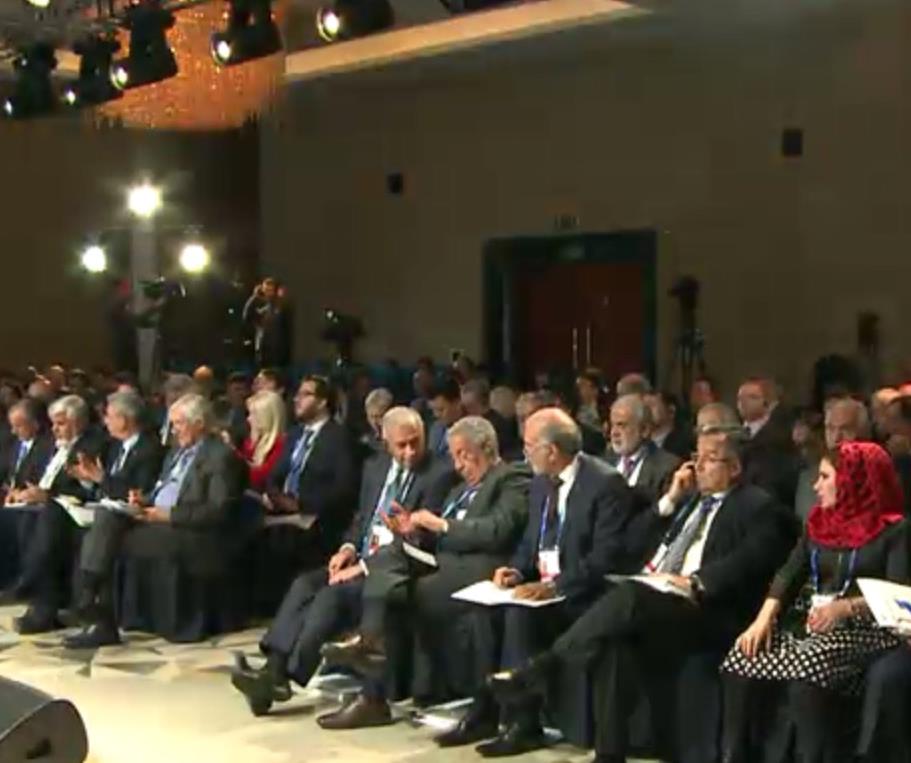 Prominent experts and high-level officials from Russia and all around the world have been trying to find the answer to the question: “The Middle East: When will tomorrow come?”
Prominent experts and high-level officials from Russia and all around the world have been trying to find the answer to the question: “The Middle East: When will tomorrow come?”
Russia’s annual Valdai Discussion Club — a prominent, marathon-like two-day dialogue on the Middle East — has just finished. The meeting, held in Moscow, united top officials and experts from Russia and all over the world, with vivid discussions on the burning issues involving the Middle East.
The Valdai format has once again proved to be an open platform for the free sharing of ideas, views and concerns. And what is more important is that it has proved that Iranians and Saudis, Palestinians and Israelis, and Turks and Kurds can be present in one hall, despite different religious beliefs, political views and affiliations. It shows they are able to talk, listen to each other, speak, peacefully argue, find common ground — and even joke and laugh.
The key topics on the table were Syria and Iraq, Yemen and Libya, the Arab-Israeli conflict, Iran and its place in regional affairs, and separately the issue of the Saudi-Iranian confrontation. They are the key issues that are forming the general regional environment and which have a serious impact on the global agenda and stability.
All these topics were approached from both regional and global perspectives, thus involving global players from the US, Russia, EU and even India and China.
The dialogue revealed several major characteristics of the current historical momentum.
First of all, we are living in a critical moment in history, with the emergence of a new world, the true nature of which is still not clear. Russia’s role in regional affairs is evolving, and is being re-evaluated with more constructive analysis, understanding and sane criticism, instead of a reaction of panic and fear.
Raghida Dergham — the founder and executive chairman of the Beirut Institute, columnist and New York bureau chief at Al-Hayat, and whose columns appear in Arab News — talked about the importance of Russia-US cooperation for the region. She also raised Iran’s role and ambitions in the region, notably in Syria.
Under the pressure of severe challenges the region is facing, there are signs of an attempt to put aside existing differences and make steps toward cooperation, facing up to the threats, and building the future the region hopes for.
At least that is what was clearly heard in the speeches of Amr Moussa, former secretary-general of the Arab League, Nabil Fahmy, former Egyptian foreign minister, and Ebtesam Al-Ketbi, founder and president of the Emirates Policy Center.
Fahmy has assumed that the majority of the regional challenges cannot be faced without the participation of the global players. But he cautioned that this participation and assistance should be constructive, not deepening the schisms with geopolitical games.
A reconciliation in a region facing major threats could be led by Egypt, traditionally taking the cornerstone role of stabilizing player, despite the severe internal crisis it is still going though following the shock of two revolutions in three years.
This call for regional reconciliation and cooperation is coming primarily from societies that are tired of confrontation and conflict.
Even the guests from Iran pointed out that there is a strong growing middle class in Iran, which is looking forward to modernization and a reconsideration of the policies toward the region and global players. Thus Iranian speakers gave hope for a change of Iranian policies in the foreseeable future. People are looking for peace, not for confrontation.
The last panel in the conference was entitled “The Future of the Middle East: In search of a common dream.” Politically the dreams of the governments are dividing, not uniting the sides. And from this perspective future prospects are quite gloomy, as long as the aspiration for dominance and power that prevails in politics continues, leading to more wars and confrontation. The dream of one government often eliminates the dream of another.
John Bell, director of the Middle East and Mediterranean Program at the Toledo International Center for Peace in Madrid, said we appear to be in a situation where there are a lot of dreams, but an absence of positive reality; some governments are manipulating Middle Eastern societies. But these same societies, political manipulation aside, are united by the same dreams of peace and prosperity.
This brings a crucial need for the emergence of civil societies that are able to form and determine the policies of governments. And the key to this lies in education, including training to resist propaganda and manipulation and teach critical thinking.
Thus, it is only through the perspective of such societies that the Middle East has a chance to pursue the common dream of peace. Governments stay and governments go. It is time to build bridges between the people.
Article published in Arab News
http://www.arabnews.com/node/1061826







